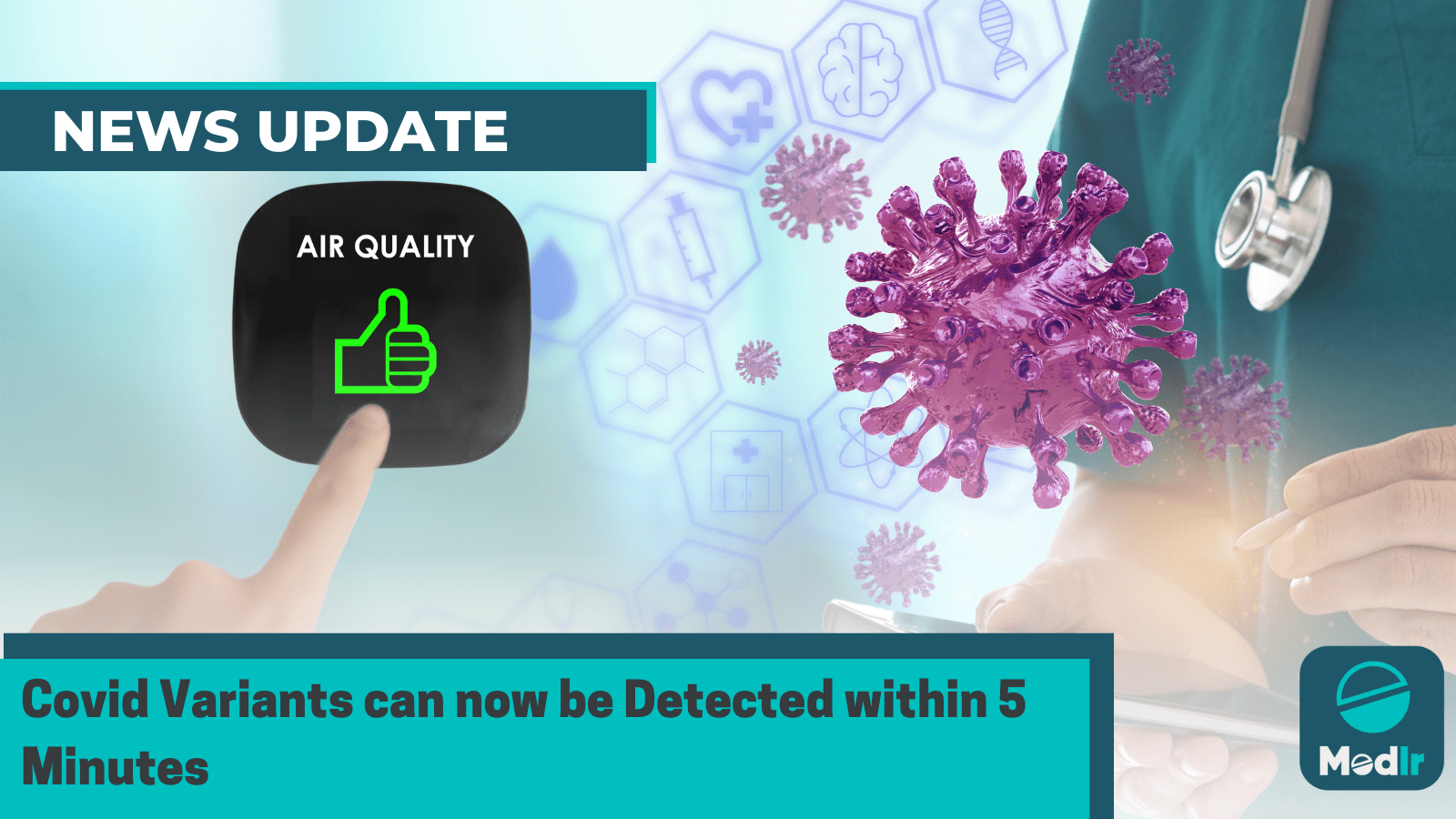Covid Variants can now be Detected within 5 Minutes
Written by Shaveta Arora
Cutting-edge air monitor detects COVID variants within 5 minutes, revolutionizing rapid testing and public health monitoring.

Researchers at Washington University in St. Louis, US, have developed a real-time air monitor capable of detecting any of the SARS-CoV-2 virus variants in a room within approximately five minutes. By leveraging recent advancements in aerosol sampling technology and an ultrasensitive biosensing technique, the team successfully created an inexpensive proof-of-concept device.
Hospitals, healthcare facilities, schools, and public places can use the device to detect SARS-CoV-2 and potentially monitor aerosols from other respiratory viruses like influenza and Respiratory Syncytial Virus (RSV). The researchers, who claim their monitor to be the most sensitive detector, have published the results of their work in the journal Nature Communications.
John Cirrito, a professor of neurology at Washington University said -
“There is nothing at the moment that tells us how safe a room is. If you are in a room with 100 people, you don’t want to find out five days later whether you could be sick or not. The idea with this device is that you can know essentially in real time, or every 5 minutes, if there is a live virus.”
Previously, the researchers had developed a micro-immunoelectrode (MIE) biosensor capable of detecting amyloid beta, a biomarker for Alzheimer's disease. They then explored the possibility of converting this biosensor into a detector for SARS-CoV-2.
To accomplish this, they replaced the amyloid beta-recognising antibody with a nanobody sourced from llamas, which specifically targets the spike protein of the SARS-CoV-2 virus.
David Brody, a former faculty member at Washington University and an author of the paper, created the nanobody in his lab at the National Institutes of Health (NIH). According to the researchers, the nanobody is small in size, highly reproducible, easily modifiable, and cost-effective to produce.
Carla Yuede, an associate professor at Washington University said -
“The nanobody-based electrochemical approach is faster at detecting the virus because it doesn’t need a reagent or a lot of processing steps. SARS-CoV-2 binds to the nanobodies on the surface, and we can induce oxidation of tyrosines on the surface of the virus using a technique called square wave voltammetry to get a measurement of the amount of virus in the sample.”
The team conducted tests on the monitor in the apartments of two COVID-positive patients, comparing real-time PCR results of air samples from the bedrooms with air samples obtained from a virus-free control room. The devices successfully identified the presence of virus RNA in the air samples from the bedrooms, while no detection was observed in the control air samples.